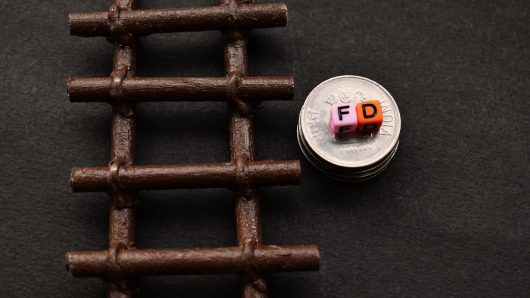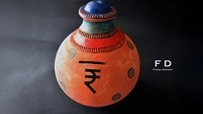New FD Rates Can Impact Your Investment Decisions - Here's How
February 18, 2025

It's safe to say, for decades, Fixed Deposits (FDs) have been a trusted choice for risk-averse investors including senior citizens as a secure avenue to park and grow their savings. That being said, whenever new FD rates are announced, investors rarely take advantage of the situation to maximise their savings. Read this blog to understand how to take advantage of new FD rates.
Understanding the Current FD Rate Landscape
On 7 February 2025, the Reserve Bank of India (RBI) decided to cut the repo rate by 25 basis points. The current repo rate stands at 6.25%. This is the first time in 5 years that RBI decided to cut the repo rate.
The repo rate cut may have impact on FD interest rates. Generally, banks lower fixed deposit interest rates when the repo rate decreases. However, some banks may choose to keep the rates as it is, without making any noticeable changes.
How New FD Rates Can Impact Investor Profiles
Let's explore how these rates influence investment decisions for various categories of investors:
1. Retirees
For retirees, FDs have long been a preferred investment choice due to their stability and predictable returns. The current stability in FD rates provides these investors with a sense of assurance regarding their income streams, especially at a time when the rates are on the higher side.
2. Conservative Investors
Investors with a low-risk appetite also benefit from stable FD rates, especially at a time when the FD rates have gone up compared to where it was a 4-5 years ago. The current scenario allows them to continue their investment strategy without significant disruptions or uncertainties.
3. Short to Medium-Term Investors
For investors with a short to medium-term investment horizon (up to 3 years), the current high-interest rates on FDs present an attractive opportunity. By locking in their funds at favourable rates, they can secure higher returns compared to other short-term investment options. However, it's essential for these investors to carefully evaluate the tenure and liquidity needs before committing to FDs.
4. High-Risk Appetite Investors
While FDs cater to risk-averse investors, those with a high-risk appetite may explore alternative investment avenues offering potentially higher returns. There are many seasoned stock market and mutual fund investors who continue to park their earnings in FDs to protect their money from market downturns.
Consider These Factors to Maximise Returns with New FD Rates
In light of the new FD rates scenario, here are some considerations for investors looking to maximise their returns.
1. Timing of Investments
Timing plays a crucial role in optimising FD returns. Investors considering FD investments for the short to medium term may benefit from booking FDs during periods of high-interest rates. However, it's essential to monitor rate trends as this may lead to missed opportunities or suboptimal returns.
2. Diversify
Consider diversifying your deposit across different FD schemes with staggered maturity periods. This strategy, commonly known as FD laddering, allows you to enjoy liquidity while you keep earning stable returns.
3. Reinvestment Planning
For investors planning to reinvest their FDs at maturity, it's important to consider interest rate fluctuations. If rates have decreased significantly, reinvesting at the lower rate may impact overall returns. Evaluating reinvestment options and adjusting strategies accordingly can mitigate this risk.
4. Monitoring Economic Indicators
Keeping an eye on economic indicators such as inflation, central bank policies, and global economic conditions can provide insights into future rate trends. Investors can use this information to make informed decisions and align their investment strategies with prevailing market conditions.
Final Thoughts
New FD rates can affect investors only if the rates come down. In the current landscape, with RBI keeping the repo rates unchanged, FD investors may continue investing in FDs to build their wealth in a safe and secure way.
Looking to grow your savings? Ujjivan SFB offers a wide range of fixed deposit products. Select the FD of your choice and take a step forward to your financial goals. Alternatively, you can browse through Ujjivan SFB product suite - our wide range of financial products are designed to make your financial life better.
Disclaimer:
The contents herein are only for informational purposes and generic in nature. The content does not amount to an offer, invitation or solicitation of any kind to buy or sell, and are not intended to create any legal rights or obligations. This information is subject to updation, completion, amendment and verification without notice. The contents herein are also subject to other product-specific terms and conditions, as well as any applicable third-party terms and conditions, for which Ujjivan Small Finance Bank assumes no responsibility or liability.
Nothing contained herein is intended to constitute financial, investment, legal, tax, or any other professional advice or opinion. Please obtain professional advice before making investment or any other decisions. Any investment decisions that may be made by the you shall be at your own sole discretion, independent analysis and evaluation of the risks involved. The use of any information set out in this document is entirely at the user’s own risk. Ujjivan Small Finance Bank Limited makes no representation or warranty, express or implied, as to the accuracy and completeness for any information herein. The Bank disclaims any and all liability for any loss or damage (direct, indirect, consequential, or otherwise) incurred by you due to use of or due to investment, product application decisions made by you on the basis of the contents herein. While the information is prepared in good faith from sources deemed reliable (including public sources), the Bank disclaims any liability with respect to accuracy of information or any error or omission or any loss or damage incurred by anyone in reliance on the contents herein, in any manner whatsoever.
To know more about Ujjivan Small Finance Bank Products Visit:"https://www.ujjivansfb.in"
All intellectual property rights, including copyrights, trademarks, and other proprietary rights, pertaining to the content and materials displayed herein, belong
to Ujjivan Small Finance Bank Limited or its licensors. Unauthorised use or misuse of any intellectual property, or other content displayed herein is strictly prohibited and the same is not intended for distribution to, or use by, any person in any jurisdiction where such distribution or use would (by reason of that person’s nationality, residence or otherwise) be contrary to law or registration or would subject Ujjivan Small Finance Bank Limited or its affiliates to any licensing or registration requirements.
FAQs
1. What is the impact of repo rate stability on new FD rates?
Repo rate stability often translates to no new change in FD rates.
2. What factors determine new FD rates?
Economic conditions, inflation rates, central bank policies, repo rates, government policies, and global economic conditions play roles in determining new FD rates.
3. Is it safe to open an FD in small finance banks?
Yes, opening an FD in small finance banks is safe. They are regulated by the Reserve Bank of India, and your deposits are insured up to ₹5 lakh by DICGC.
4. Is FD interest paid monthly?
Interest pay-out depends on the FD you choose. For cumulative FDs, the interest is paid upon maturity. For non-cumulative FDs, you can choose the interest pay-out frequency - monthly, quarterly, half-yearly or annually.
5. How often do FD interest rates change?
Banks usually revise or evaluate FD rates based on the change in repo rate. If the repo rate goes down, FD rates usually come down and vice versa. However, the final rate offered depends solely at the bank's discretion.
Latest Blogs

ITR-1 (Sahaj) Restrictions: Income Sources Not Allowed & Filing Rules
With just a few days left before the 15 September 2025 deadline for filing Income Tax Returns (ITRs) for Assessment Year (AY) 2025-26, many taxpayers are rushing to submit their forms online.

GST Rate Cut on Electronics: What It Means for Consumers and Retailers
India’s Goods and Services Tax (GST) system has entered a new era with the rollout of GST 2.0, effective from September 22, 2025.

Banking Safety Guide: How to Avoid QR Code Frauds While Making Payments
India’s love for QR code payments has made transactions lightning-fast, but also opened a new front for cybercriminals.

Scam Alert! Phishing, Vishing, and Smishing Can Drain Out Your Finances
Digital banking in India has transformed the way we manage money.

India’s New GST Reform Bill: What GST 2.0 Means for You
India’s indirect tax system is entering a landmark new phase.





